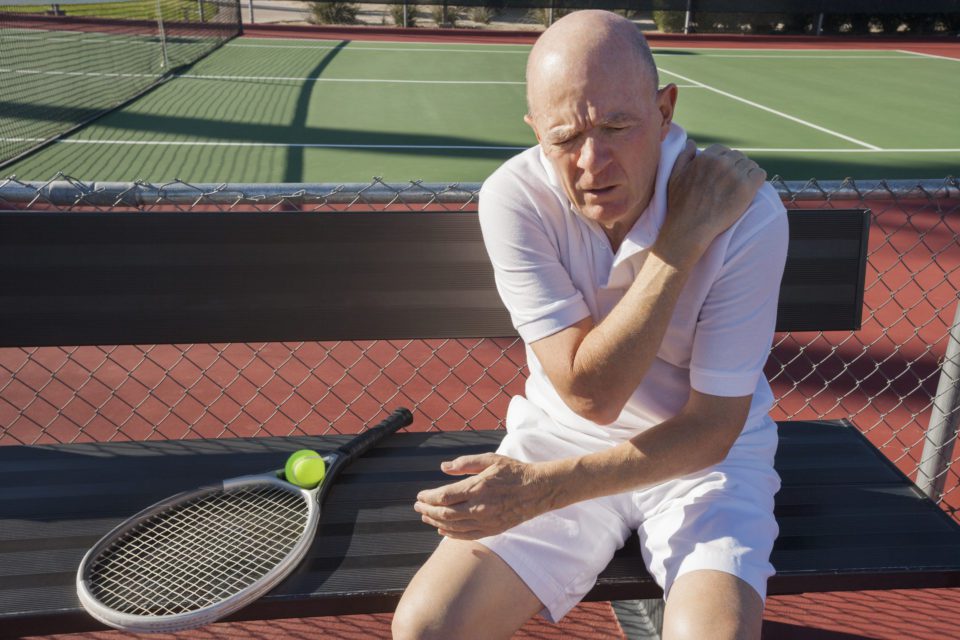How To Knock Out Shoulder Pain
That nagging shoulder ache…the sharp pain when you move your arm or the twinge between your shoulder blades. Sometimes, you even feel shoulder pain in your neck. Regardless, it translates to constant and uncomfortable pain, often inhibiting daily activities.
So what do you do and is surgery in your future?
Sadly, many are told that surgery is their only option as
What Causes Chronic Shoulder Pain?
Our shoulders are actually the most mobile of all our joints, making them even more susceptible to overuse and injury. One of the most common causes of shoulder pain is a rotator cuff tear. Simply put, this injury is a tear within the rotator cuff tendons in your shoulder. This tear or series of tears can happen from
Symptoms of rotator cuff injuries include pain, weakness, and a loss or partial loss of range of motion around the affected joint and can grow increasingly unpleasant. Many people also hear a clicking sound when they try to raise their arm.
Another common cause of shoulder pain is an injury called “frozen shoulder.†Frozen shoulder generally operates through a series of three phases, starting with “freezing.†This phase is characterized by shoulder pain first, but then a progressive loss of range of motion within the shoulder.
Other shoulder pain can be derived from bursitis, rotator cuff impingement, or even arthritis in the shoulder.
At-Home Treatment For Shoulder Pain
The first step to managing your shoulder pain is to get a proper diagnosis. Frozen shoulder is commonly misdiagnosed as a rotator cuff tear, so be sure to give your doctor as many details as you can.
Rotator Cuff Tear
Should your diagnosis indicate a rotator cuff tear, early treatment is key. If you delay structured healing of this tendon, the rotator cuff begins to retract, inhibiting the success of both conservative and invasive treatments. The good news is that small and medium tears respond well to conservative rehab. This includes a carefully structured rehabilitation plan with appropriate exercises to take you through the various healing stages. Many have also experienced relief from applying both ice and heat to the area. Pacing your rehab is also important, avoiding excessive use but not limiting mobilization either, as light movement can actually help the healing process.
Frozen Shoulder
If you’re managing a frozen shoulder, be sure to act appropriately according to the stage your shoulder is currently in. Getting overzealous with a rehab plan is a recipe to set yourself further back on your healing timeline. For example, during the “freezing†stage, gentle joint mobilizations and stretches can be tolerated, but aggressive soft-tissue treatment may actually aggravate the injury further. Use pain as an indicator and try to stay on the conservative side until you reach phase two.
Once you’re in phase two, your joint can handle a bit more of a treatment and structured rehab plan, including mobilizations with movement. Phase three is where you can really begin to see the benefit from getting deeper and more sophisticated with movement, exercises
Keep in mind that rehabbing frozen shoulder can feel like a long game; many cases report up to 30 months before full healing is achieved. This makes patience and perspective all the more important throughout your recovery process. With health on the other side, it’s worth it!
Therapeutic Treatment For Shoulder Pain
Chiropractic combined with massage treatment
By scheduling regular treatment sessions, you can help to keep your body’s response system in tip-top shape and minimize inflammation. During the initial evaluation, we will go over your symptom history in detail and construct a treatment plan that you are completely comfortable with before moving forward. Don’t put off your healing; schedule an appointment online or call (480) 787-0469.
This article is for informational purposes

